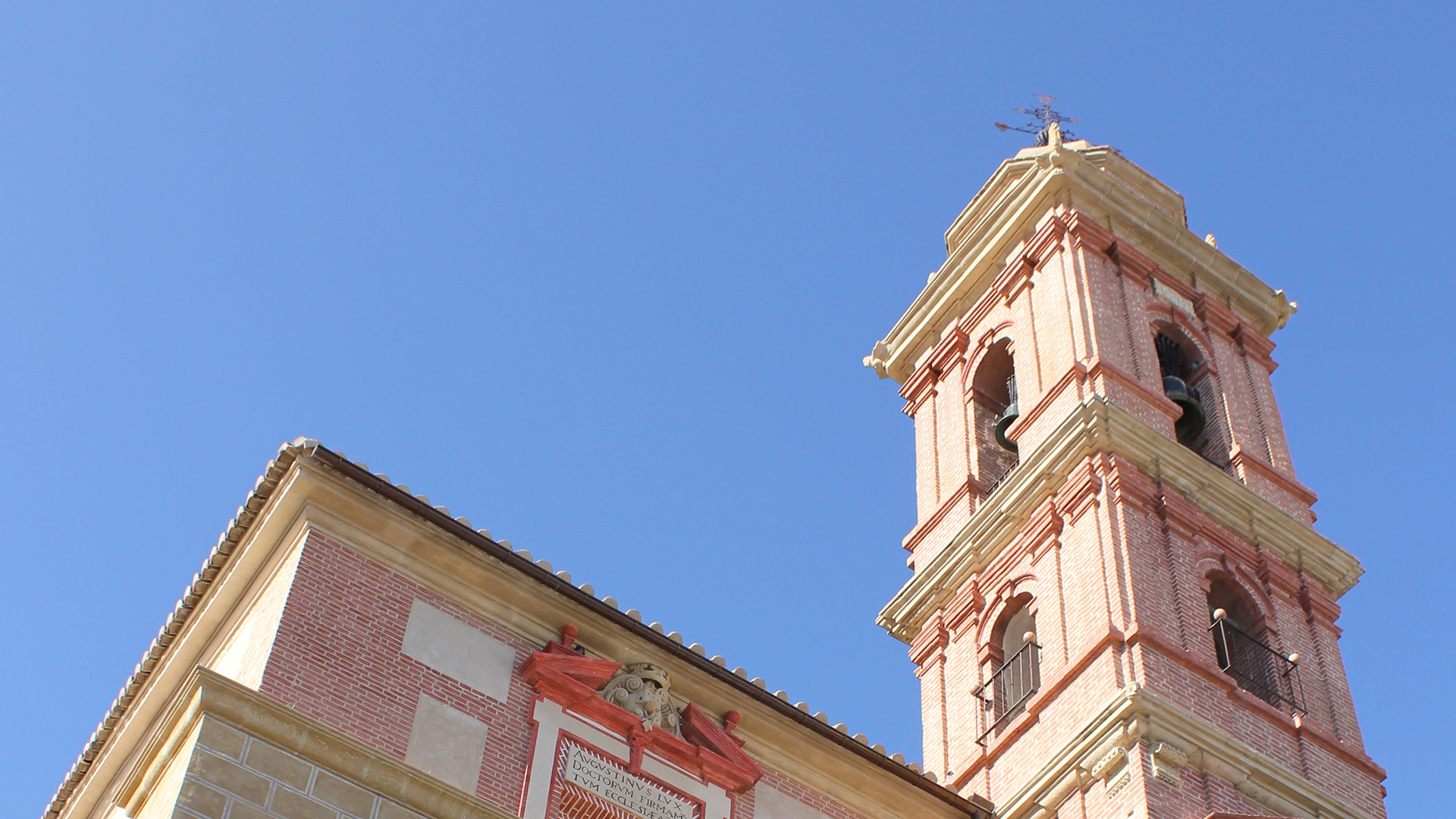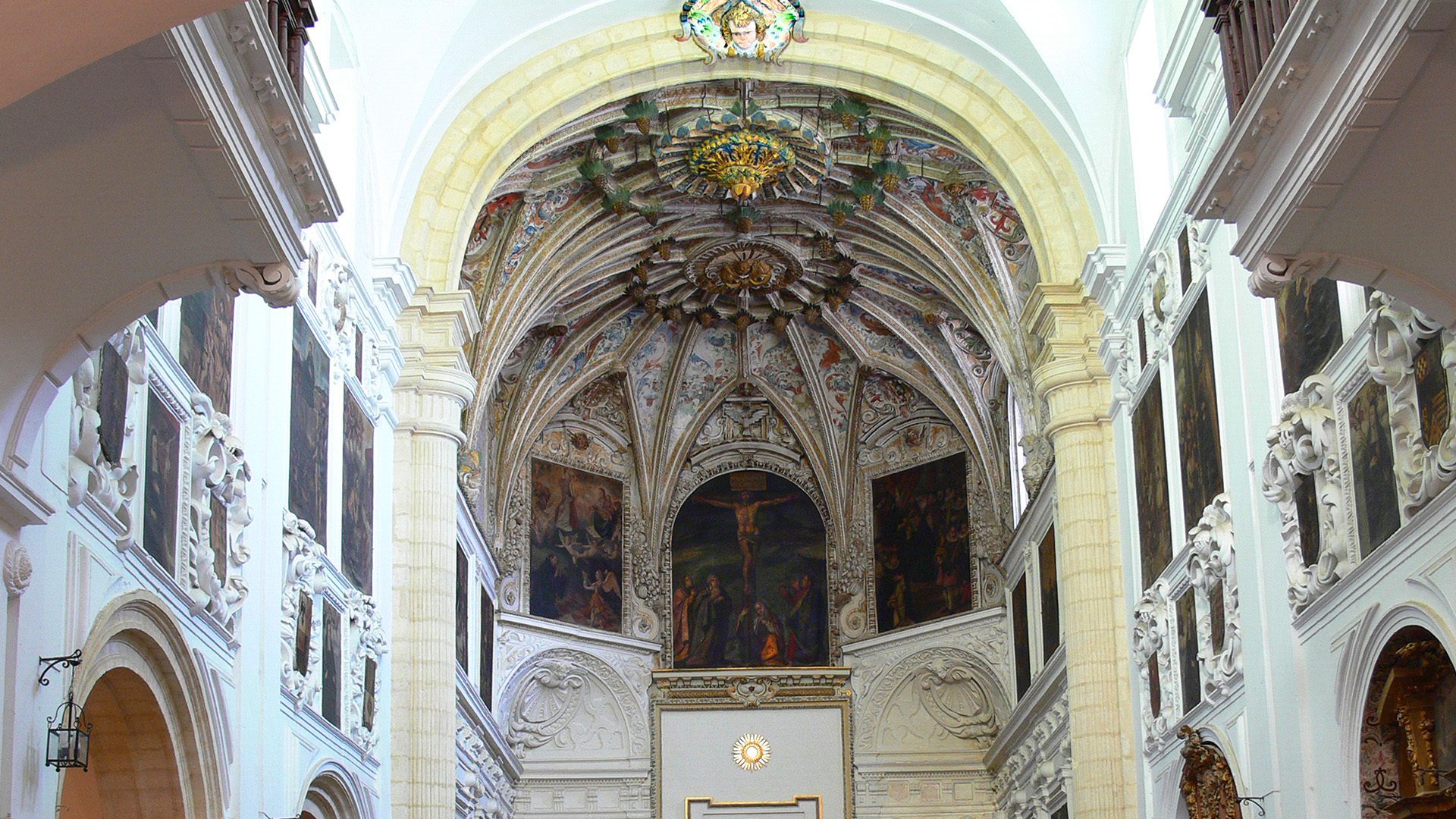Discover the Church of San Agustín.
The cover offers a mannerist composition, highlighting a flown balcony that gives a certain civil air to the building. The tower, of Mannerist style rises to the cornice of the roof and two more with bulbous spire embedded between two buttresses, also presents two constructive moments.
Tower that has been restored in 2012 by the Historical Heritage Area of the City Council of Antequera. Very diverse have been the repairs that this temple has suffered, those of 1668 stand out that the Mudejar armor of the nave that was designed by Diego de Si loé is changed by the half-barrel vault with lunettes that we see now. The main chapel was remodeled within the Mannerist style, it is accessed by a large triumphal arch of half a point.

Forming therefore a very balanced spatial unit, with stucco ornamentations, with fruits, shields, heads … In the central nave are located the altarpieces of Santa Rita, Santa Barbara and the Chapel of the Holy Burial as well as on the side of the gospel there are chapels that are interesting in terms of their roofs and the architectural elements that give them access. Inside they keep altarpieces of different styles.
THE COFRADÍA DE LA POLLINICA begins the processional parades of Antequera’s Holy Week, one of the most recently created brotherhoods in the city, founded in February 1949.
In 1950 procession for the first time the image of Jesus to his Entry into Jerusalem, acquired and ceded by the Association of Brotherhoods. Made in the Olot workshops and represents Jesus on a donkey in front of a palm tree, accompanied by a woman with her son and two young people who cheer and cheer him with palms and olive trees. In 1956 María Santísima de la Consolación y Esperanza was incorporated, from the late seventeenth century granted by the Augustinian Nuns. Attributed to José de Medina, in turn with features of Montes de Oca, formerly called Consolación y Correa, and held a baby Jesus. Procession under green pallium of Antequerano cut embroidered in application and premiered in 2000, previously processioned under octagonal pallium.

After the transfer in 1968 to the old convent of San Agustín, in 1961 the iconographic cycle of this brotherhood is completed with Jesus in the Praying in the Garden, being replaced by the current image in 1974. Image of Andrés de Carvajal of the eighteenth century, adapted by Antonio Checa. It represents Jesus kneeling at the foot of the olive tree, an angel offers him the chalice of the passion. In the year 2000, with the golden jubilee and the Liturgical Coronation of the Virgin, the current pallium and new belongings were released, with the embroidery workshop of the Brotherhood itself, belongings that can be admired in the showcases that are exposed in the temple.
HOLY CRUCIFIX Extinct brotherhood that came to procession up to 4 thrones, among the anecdotes throughout its history, the disputes they engaged with the Brotherhood of Solitude (based in El Carmen) about the position of arrival when heading to Santa María, place where penitential station was made centuries ago. The ecclesiastical authority had to intervene, giving the privilege to that of El Carmen because it is older. In the Chapel of the Holy Burial we can see the two images of the Virgin of the Greater Pain in her Solitude and the Recumbent Christ that are preserved, as well as the urn of great value. Formerly processioned a throne with the cross and shroud, another with the canine (allegory of death), the Holy Burial and the Virgin without pallium accompanied by two more images. Most of its processional belongings are missing, preserving only the valuable Urn and the Processional Crown of the Virgin, which currently processions the brotherhood of the Pollinica.
Contact:
Address: Calle Infante Don Fernando, 15, Antequera, Málaga
Schedule: Saturday and Sunday from 11:00 to 13:30
